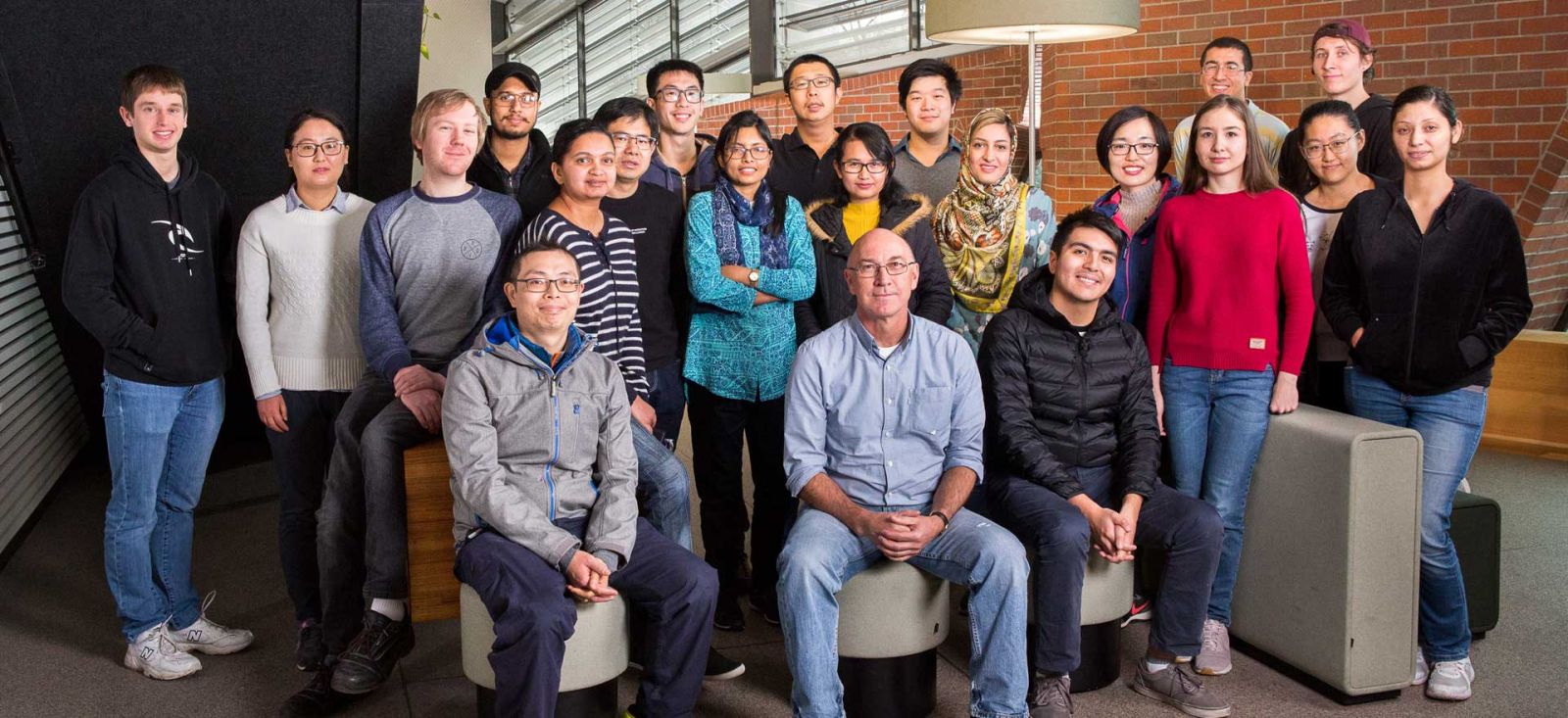Jones Group

Research
Dr Jones’ key interest lay in the design, synthesis, characterization, and utilization of new advanced organic semiconductors, light harvesting materials and photocatalytic carbon dioxide activation.
He has developed a range of high performance p-type organic semiconductors with liquid crystalline properties. Recently he has developed a new class of liquid crystalline singlet fission materials for enhancing solar cell efficiency.
Techniques
Organic synthesis, inorganic catalysis, heterogeneous photocatalysis, optoelectronic devices. Techniques, organic synthesis, UV-Vis, emission spectroscopy, HPLC, GPC, microwave reactors, electrochemistry, continuous flow synthesis, X-Ray techniques (GIWAXS, GISAXS at Australian Synchrotron), SEM, TEM, tomography, NMR, EPR, ultra-fast spectroscopy, organic solar cells, organic transistors, flexible devices, printed devices.
Group Members
Group Head
Dr David Jones
Postgraduate Fellows
Dr Jegadesan Subbiah
Dr Valerie Mitchell
Dr Pengjun Zhao
Graduate Students
Mr Calvin Lee
Mr Gagandeep Ahluwalia
Ms Shruti Agnihotri
Ms Saghar Masoomi-Godarzi
Ms Marissa Nalenan
Mr Jianchao Lin
Ms Ruoxuan Shi
Mr Yanlin Wang
Biography
Dr David J. Jones is a Senior Research Associate. His research group is a world leader in the area of development of advanced organic semiconductors for printed electronics and has been at the forefront in translation of printable solar cell technology to large-scale pilot scale. His current research interests are n- and p-type organic semiconductors, singlet fission, and photocatalytic reduction of carbon dioxide. Until 2015 was the Project Coordinator of the Victorian Organic Solar Cell Consortium (VICOSC). He completed his undergraduate and graduate studies at the University of Tasmania before completing postdoctoral work at the University of Sheffield and Cardiff University before moving to Imperial College London as the Team Leader for the BP Catalyst Discovery Project lead by Prof Vernon Gibson. He joined Prof Andrew Holmes in Cambridge in 2004 before moving to the University of Melbourne with Prof Holmes in 2005. He has been at the forefront of ligand design and high throughput screening for organometallic catalyst development and translation to industry of university research.



